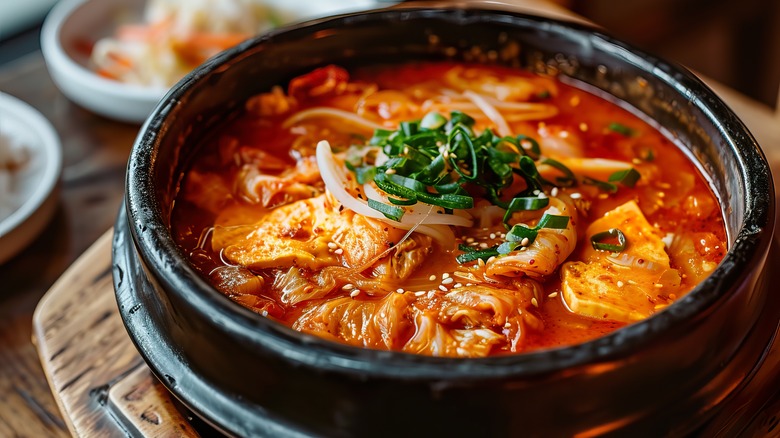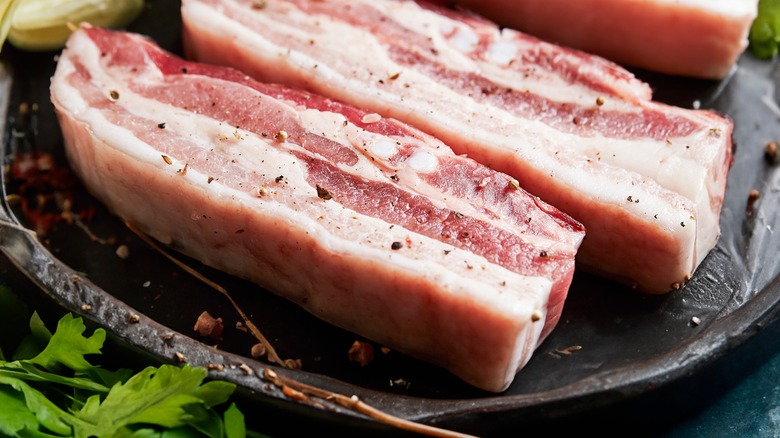Kimchi Jjigae Tastes Better With One Pork Upgrade
"Soup season" is an entity unto itself for a reason. Diehard soup lovers know that a truly memorable bowlful has the power to warm, to please, and to satisfy, which is definitely the case when it comes to kimchi jjigae. If you've never tried it before, kimchi jjigae (김치찌개) is a classic Korean dish – a rich, spicy, scarlet stew loaded with kimchi, tofu, and pork (we have a recipe for it here). It's all about the interplay of dimensional flavors: sweet-spicy gochujang, intense gochugaru chili flakes, funky kimchi, and meaty pork, which get cooked together over low heat for a long duration until they marry into a thick stew.
Traditionally, kimchi jjigae is a thrifty way for home cooks to use up a surplus of older, extra-sour fermented kimchi. In the name of thriftiness, the stew is also typically made with cheaper cuts of pork (our recipe uses pork tenderloin) or even Spam. To take this beloved comfort food to the next level, elevate it by swapping the lower-quality cuts with silky-soft pork belly. The luscious fat-to-meat ratio makes for a tender, naturally umami-flavored bite, transforming the role of pork in this meaty stew beyond just a utilitarian protein. In true kimchi jjigae form, this sumptuous upgrade still keeps it budget-friendly. On Amazon, pork belly runs for $6.99 per pound, not a far cry from pork tenderloin at $5.29 per pound, considering how relatively little of the ingredient is needed per batch of stew.
Swap the low-grade pork cut for meaty pork belly
To cook, thinly slice the pork belly and lightly brown it in the bottom of a large soup pot with oil. At this point, you can also toss in any aromatics you might want to saute, like onion and garlic. Once the pork belly has a little color on it, you can add in the remainder of the kimchi jjigae ingredients and simmer to combine.
You can also totally work with pre-cooked pork belly leftovers, which can be cooked in the oven (and you should always cure pork belly before cooking it, for the record). Even if you don't use pork belly, the best cut of pork for a successful, flavorful kimchi jjigae has some fat on it. But, if you need to render any excess fat off of the pork belly before adding it to your soup, hit it with a 10-minute tenure in a skillet over medium heat.
To complete the meal, serve your kimchi jjigae with jasmine rice, sesame pancakes, and seasoned soybean sprouts. Any array of Korean banchan small plates will pair beautifully alongside this flavorful, elevated stew. Garnish each bowl of stew with sesame seeds and green onions sliced on the diagonal, plush a dash of fish sauce, if desired. The pork belly makes for a luscious bite, but for an even richer meal, you could also add a handful of glass noodles or a few boiled Korean mandu dumplings to this complex stew.

